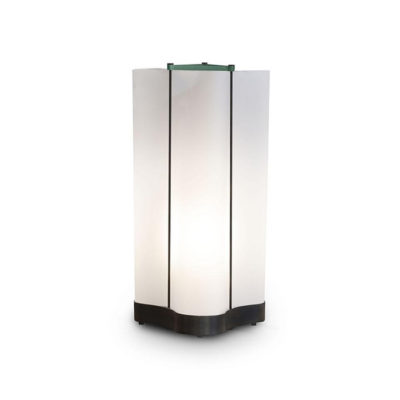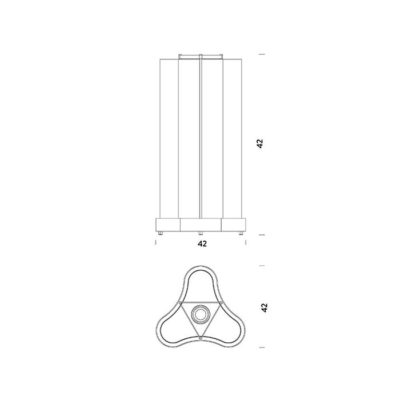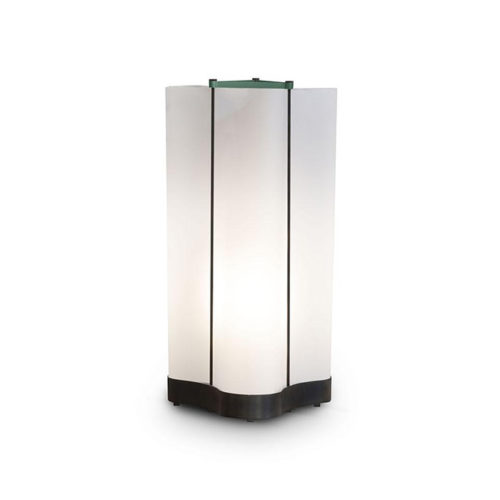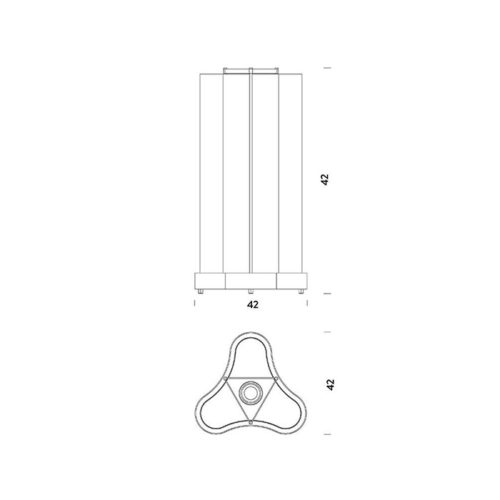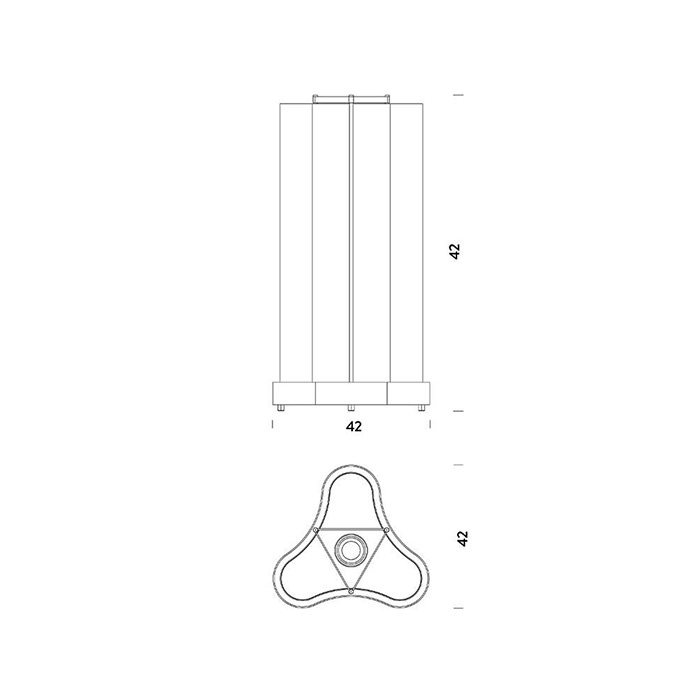Our Catalog
New
Cabanon lamp
Designer : Charles-Edouard Le Corbusier
Editor : Nemo Lighting
Creation date : 1952
Materials : Tracing paper, black and green zinc
Length (cm) : 21
Width (cm) : 21
Height (cm) : 42
Further information : E27 A60 60W 230V - Variateur d'intensité lumineuse
Further informationAbout
The Cabanon lamp, an emblematic creation by the renowned architect Le Corbusier, represents a remarkable fusion of functionality and modernist aesthetics. Le Corbusier, born Charles-Édouard Jeanneret-Gris, is a towering figure in modern architecture. Born in 1887 in Switzerland, he achieved global fame for his significant contributions to architecture and urban planning, marked by a style that is clean, functional, and innovative.
The history of the Cabanon lamp is part of the project for the Cabanon of Roquebrune-Cap-Martin, a small holiday cabin that Le Corbusier designed for himself in 1952 on the French Riviera. This modest dwelling, measuring just 3.66 x 3.66 meters, became a manifesto of his philosophy of minimalist housing and his approach to the optimal use of space.
The lamp, specifically designed for this cabin, reflects Le Corbusier’s interest in lighting solutions that complement his architectural spaces. Its design is simple yet ingenious, characterized by unadorned functionality and a minimalist aesthetic. The Cabanon lamp stands out with its cylindrical shape, metal structure, and swiveling lampshade, which allow for flexible orientation of the light, a crucial aspect in the confined space of the cabin.
Le Corbusier’s influence on modern architecture extends well beyond his buildings. His work on furniture and lighting fixtures, like the Cabanon lamp, also had a significant impact on interior design and lighting conception. These creations embody his ideal of functionality, where each object must serve a practical purpose while contributing to the aesthetic harmony of the space.
Beyond its functional aspect, the Cabanon lamp has become a collectible item for design enthusiasts. Its re-edition by contemporary manufacturers attests to its timelessness and importance in design history. It represents not only Le Corbusier’s legacy as an architect and designer but also his vision of a design that transcends time and fashion, remaining relevant and functional decades after its creation.
Through the Cabanon lamp and his other works, Le Corbusier demonstrated that design and architecture are not just about form, but also function and context. He successfully combined aesthetics with utility, creating works that are not mere objects, but integral components of a harmonious living space.
In conclusion, Le Corbusier’s Cabanon lamp is much more than a mere light source. It embodies the principles of minimalism, functionality, and elegance that define Le Corbusier’s work. Through this creation, he showed that even the most ordinary objects, when designed with care and attention, can become design masterpieces and contribute to the overall harmony of the space they occupy. The Cabanon lamp thus remains a lasting testament to Le Corbusier’s ingenuity and avant-garde vision, with an influence that continues to inspire the world of architecture and design.
Charles-Edouard Le Corbusier
Swiss designer (1887 - 1965)
The architect of modernity… Charles-Edouard Jeanneret-Gris (better known under the pseudonym Le Corbusier) was born on October 6, 1887 in Switzerland. Still a beginner architect, he wrote to his parents in 1910: “May life have a purpose and not that life is only an arrow launched towards death”. A goal fully achieved since it leaves behind a lasting mark in the history of architecture and design. He is one of the main representatives of the modern movement with, among others, Ludwig Mies van der Rohe, Walter Gropius, Alvar Aalto and Theo van Doesburg.
Architect, urban planner, designer, decorator, sculptor, painter, designer, writer: Le Corbusier is a man of many talents who worked on a multitude of projects on a global scale.
Le Corbusier built 78 buildings in 12 different countries and on 3 continents, he worked on nearly 400 architectural projects (villas, cities, houses, buildings, museum, chapel)! Le Corbusier leaves behind an extraordinary living heritage, whose buildings have retained their original private or public use. Le Corbusier published nearly 40 books and wrote hundreds of essays, some of which are among the most influential texts in modern cultural thought.

